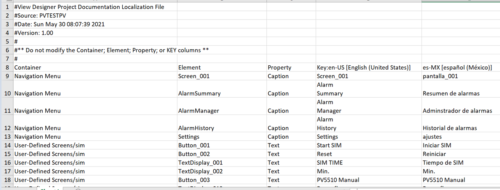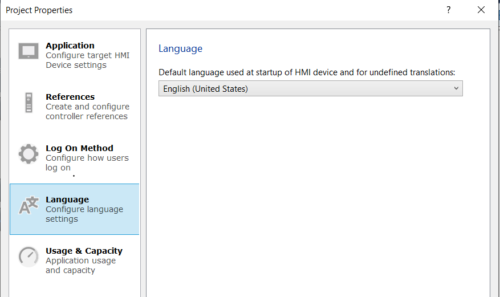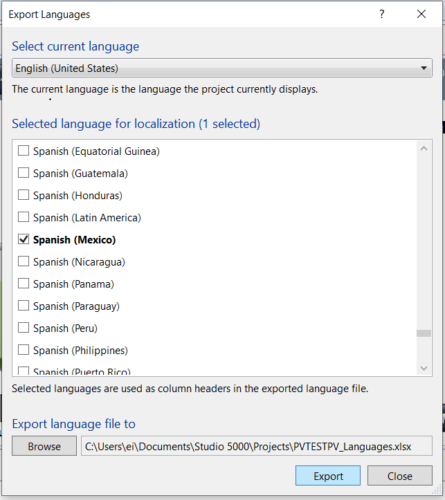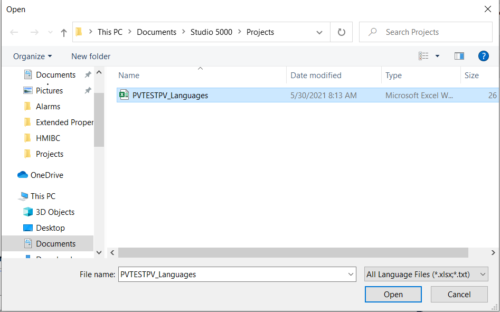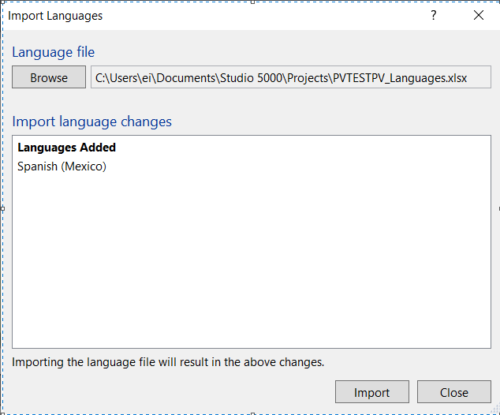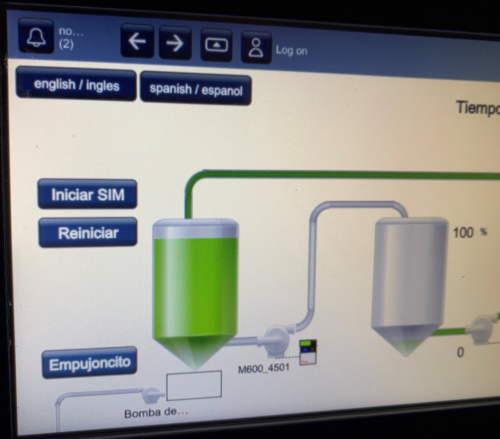
One of my favorite things about my home state of Louisiana is culture. We have a blend of many beautiful cultures and out of that comes some of the best food, entertainment and zeal for life I have known anywhere.
While I could write volumes on all of that, I will move on to my point, that, no matter where you are in the world today, the diverse cultures will likely bring the need for different languages in the manufacturing environment.
In this article, I want to implement language switching in my View Designer/Panelview 5510 project and discuss what I learned along the way.
Default Language
- In the main “Project Properties” tab, you can set the “Default Language” for the Project that will begin when the project starts up.
Adding a Language or Languages to the Project
The first step is to export the project language file (to excel) so that it can be modified. Select “Tools>Export Languages…” as shown below.
Next, I need to select additional Language(s) that I want to add to the project. In this example case, I am going to add Spanish to my project as shown below. Then click “Export”.
When you open the excel file, you will see the added language column to the right of the default language column and it will be empty. All the translations are manually done, so I had to look up translations for every word or phrase and add them to the project. Note: Any translations that are left blank will revert to the default language at runtime.

After making all needed translations, it is time to import the language file back to the project. Select “Tools>Import Languages…” as shown below.
Select the language file and click the “Open” button.
You will see the following message with the language to be added. Click the “Import” button.
Changing Languages at Runtime
To change languages at runtime, I added two buttons to my project. One button to swap to Spanish and the other to swap back to English. The button to swap to Spanish is shown below. Under “Button Behavior”, I chose “Switch Language on Release” and Selected “Spanish (Mexico)” from the drop down menu. I then saved and downloaded my project.
At Runtime
When I select the “spanish/espanol” button you can see in this screenshot that the button texts all change to their translation that I placed in the language file.
A consideration when switching languages, you will see in the below screenshot that due to the translation differences, text lengths will change often at a loss to the viewer.
These text length changes will have to be resolved at each translation so the text appears correctly at runtime.
For example “Running” in English is translated to “Corriendo” in Spanish. I would need to make this text display just a little longer in the project to display correctly in both English and Spanish at Runtime.
References
Conclusion
Language switching in your project is a valuable tool in a diverse manufacturing environment.
Even if a person can speak more than one language, if there is confusion, they can always switch to their native language and resolve the confusion.
Best to you in your endeavors ahead in multiple languages.
Written by Brandon Cooper
Senior Controls Engineer and Freelance Writer
Have a question? Join our community of pros to take part in the discussion! You'll also find all of our automation courses at TheAutomationSchool.com.
Sponsor and Advertise: Get your product or service in front of our 75K followers while also supporting independent automation journalism by sponsoring or advertising with us! Learn more in our Media Guide here, or contact us using this form.
- Things I’ve Learned Travelling for Work (2) - July 17, 2025
- Things I’ve Learned Travelling for Work (1) - July 10, 2025
- Emulating an Allen-Bradley E3 or E3 Plus - June 30, 2025

Discover more from The Automation Blog
Subscribe to get the latest posts sent to your email.


